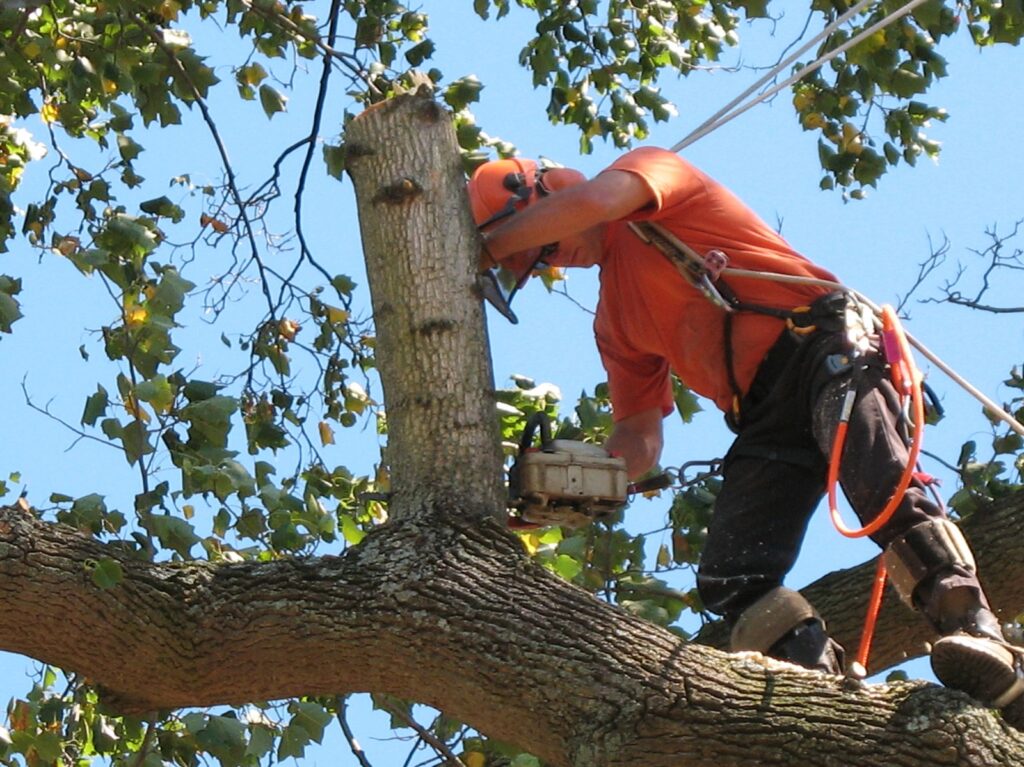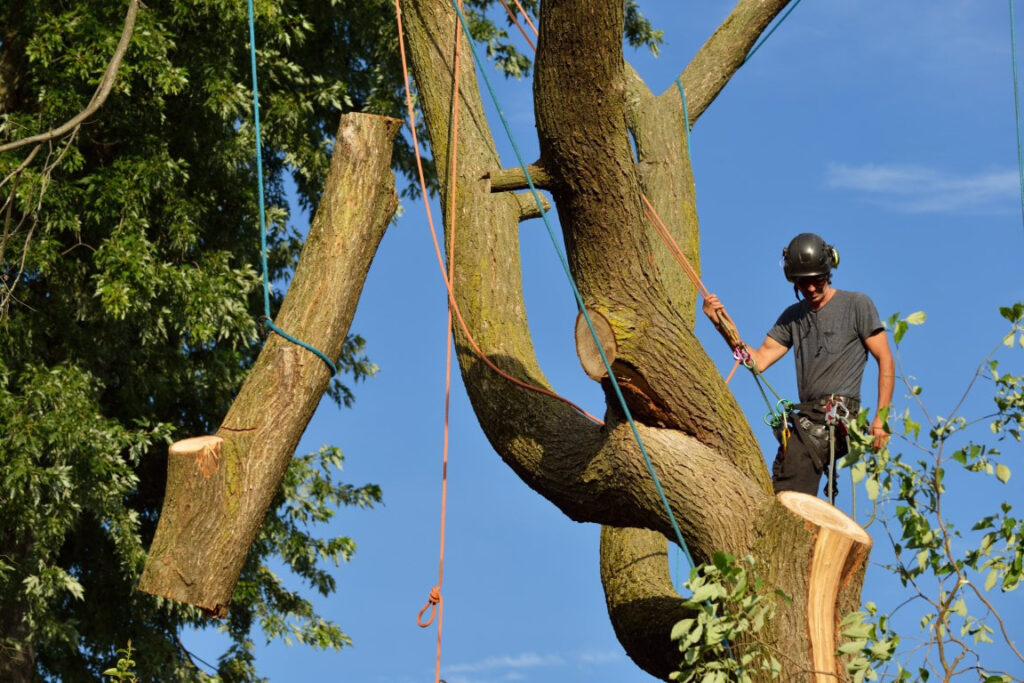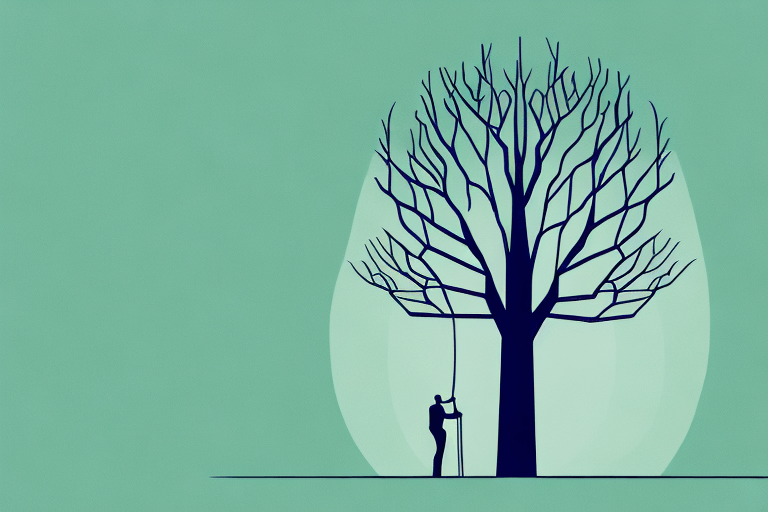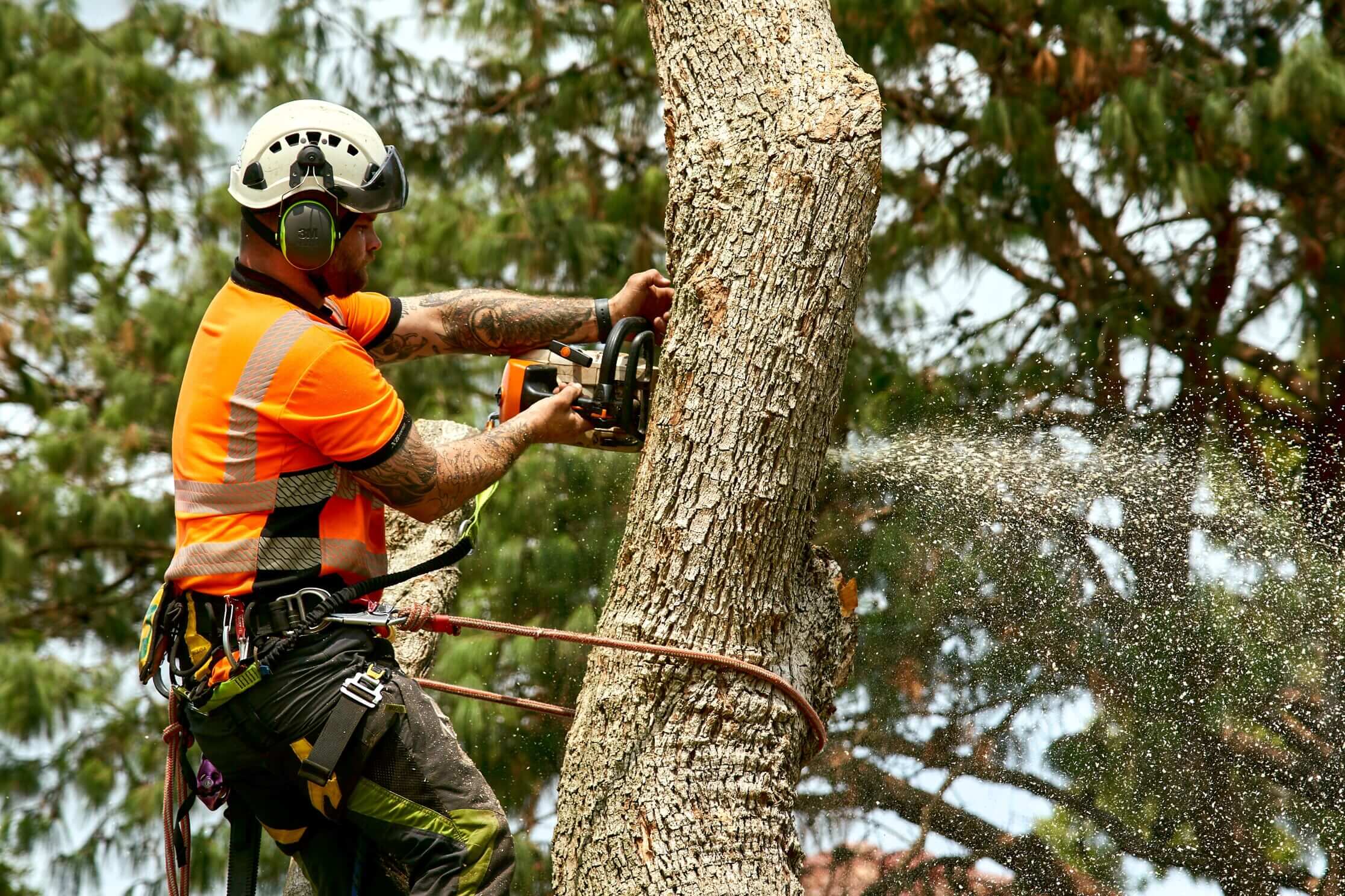Trees are not just beautiful additions to our outdoor spaces; they also provide shade, clean air, and a sense of tranquility. However, it is important to remember that trees, like any living organisms, require regular care and maintenance to ensure their health and safety. One highly effective method of tree maintenance is preventative tree lopping. This process involves strategically trimming tree branches to reduce the risk of falling branches and prevent property damage. In this article, we will explore the concept of preventative tree lopping, its safety benefits, environmental impact, the process involved, and why it is crucial to hire professionals for this task.
Understanding the Concept of Preventative Tree Lopping
Regular tree maintenance is essential for the overall health and safety of trees. Preventative tree lopping Sydney focuses on proactive measures to address potential risks before they become major problems. By identifying and removing hazardous branches, preventative tree lopping helps ensure the longevity and stability of trees on your property.
The Importance of Regular Tree Maintenance
Tree maintenance, including preventative lopping, plays a crucial role in the safety of your property. Regular inspections and maintenance help detect signs of disease, pest infestation, or structural weaknesses in trees. By addressing these issues early on, you can prevent accidents and potential damage to your home.
Regular tree maintenance also contributes to the overall aesthetics of your property. Well-maintained trees enhance the visual appeal of your landscape, creating a welcoming and beautiful environment. Additionally, healthy trees provide shade, reducing the need for excessive air conditioning during hot summer months and helping to lower energy costs.

How Preventative Tree Lopping Works
Preventative tree lopping involves the strategic removal of hazardous branches while preserving the health and appearance of the tree. Professional arborists assess the tree’s overall condition and identify branches that pose potential risks. These risks can include dead or weakened branches, overhanging limbs, or branches that may come into contact with nearby structures.
During the lopping process, arborists use specialized tools and techniques to carefully remove the identified hazardous branches. This ensures that the tree remains structurally sound and reduces the risk of falling branches during storms or high winds. The removed branches are then properly disposed of, following environmentally friendly practices.
In addition to branch removal, preventative tree lopping may also involve branch thinning or crown reduction. Branch thinning involves selectively removing certain branches to increase airflow and sunlight penetration, promoting the tree’s overall health. Crown reduction, on the other hand, involves reducing the size of the tree’s canopy to minimize the risk of branch failure.
It is important to note that preventative tree lopping should only be performed by trained and experienced arborists. Improper lopping techniques can cause significant damage to the tree and may even lead to its decline or death. Therefore, it is always recommended to hire professionals who have the knowledge and expertise to carry out the lopping process safely and effectively.
In conclusion, preventative tree lopping is a proactive approach to tree maintenance that helps ensure the safety, health, and longevity of trees on your property. By addressing potential risks before they become major problems, you can protect your home and enhance the beauty of your landscape. Hiring professional arborists for preventative tree lopping is crucial to ensure the proper care and preservation of your trees.
The Safety Benefits of Preventative Tree Lopping
Investing in preventative tree lopping not only enhances the aesthetic appeal of your property but also plays a crucial role in ensuring the safety of both your property and its occupants. By removing hazardous branches, you significantly reduce the risk of accidents and property damage.
Reducing the Risk of Falling Branches
Over time, trees may develop weak or dead branches that are prone to breaking and falling. These falling branches can cause serious injuries to people and pets, as well as damage to vehicles and other objects in their path. Through preventative tree lopping, these hazardous branches can be identified and carefully removed, mitigating the risk of accidents.
Additionally, the removal of dead or diseased branches not only reduces the risk of them falling but also promotes the overall health and longevity of the tree. By eliminating these weak branches, the tree can allocate its resources more efficiently, allowing for stronger and healthier growth.
Preventing Property Damage
Large trees with overhanging limbs may pose a significant threat to nearby structures, such as houses, garages, or power lines. During storms or strong winds, these overhanging branches can sway and potentially break off, causing costly damage to your property.
By strategically removing these branches through tree lopping, you reduce the likelihood of branches falling and causing damage to your property. This proactive approach not only safeguards your home but also prevents potential disruptions to power lines, ensuring uninterrupted electricity supply.
Furthermore, the removal of overhanging branches can also help protect your roof and gutters from debris buildup. Leaves, twigs, and other tree debris can accumulate on your roof, leading to clogged gutters and potential water damage. By regularly lopping trees, you minimize the risk of such debris accumulation, thus preserving the integrity of your roof and gutter system.
It is important to note that tree lopping should be carried out by trained and experienced professionals who adhere to industry standards and regulations. These experts possess the necessary knowledge and equipment to safely and effectively perform tree lopping, ensuring the best possible outcomes for both safety and tree health.
The Environmental Impact of Preventative Tree Lopping
While safety and property protection are key motivators for preventative tree lopping, it is also vital to consider the environmental impact. Proper tree maintenance promotes tree health and longevity while maintaining a balance between safety and sustainability.
When it comes to the environmental impact of preventative tree lopping, there are several important factors to consider. These include promoting tree health and longevity, balancing safety and sustainability, and preserving the ecological balance of the surroundings.
Promoting Tree Health and Longevity
Preventative tree lopping allows arborists to address any health issues trees may have promptly. By removing diseased or weak branches, the overall health and vigor of the tree are improved. This not only enhances the tree’s aesthetic appeal but also ensures that it can continue to provide its numerous benefits for years to come.
Additionally, by identifying and removing branches that may be affected by pests or diseases, preventative tree lopping helps prevent the spread of these issues to other parts of the tree or nearby trees. This proactive approach to tree care plays a crucial role in maintaining the overall health of the surrounding ecosystem.

Balancing Safety and Sustainability
Tree lopping can seem counterintuitive at first, as it involves cutting off branches. However, when performed by skilled professionals, preventative tree lopping strikes a delicate balance between safety and sustainability.
By removing hazardous branches, such as those that are dead, damaged, or overhanging structures, trees can actually become more resistant to disease and stress. This is because the removal of these branches allows the tree to redirect its resources towards healthier parts, strengthening its overall structure and immune system.
Furthermore, the practice of preventative tree lopping helps prevent accidents and property damage caused by falling branches during storms or high winds. By proactively addressing potential safety hazards, tree lopping contributes to the overall safety and well-being of both humans and the environment.
Preserving the Ecological Balance
In addition to promoting tree health and safety, preventative tree lopping plays a crucial role in preserving the ecological balance of the surroundings. By removing diseased or invasive branches, arborists help prevent the spread of pests and diseases that can harm not only the tree but also other plants and organisms in the ecosystem.
Moreover, by maintaining a balance between safety and sustainability, preventative tree lopping ensures that the surrounding environment remains intact. Trees provide essential habitat for various wildlife species, including birds, insects, and mammals. By preserving the health and longevity of trees, preventative tree lopping contributes to the overall biodiversity and ecological stability of the area.
In conclusion, while safety and property protection are important considerations, the environmental impact of preventative tree lopping should not be overlooked. By promoting tree health and longevity, balancing safety and sustainability, and preserving the ecological balance of the surroundings, this practice plays a vital role in maintaining a healthy and sustainable environment.
The Process of Preventative Tree Lopping
Preventative tree lopping involves a systematic approach to identify and address potential risks. It requires expertise and should be carried out by qualified professionals who are knowledgeable about tree biology and lopping techniques.
When it comes to the safety of your property and the people around it, preventative tree lopping plays a crucial role. By proactively identifying and addressing potential risks, you can prevent accidents and damage caused by falling branches. Let’s take a closer look at the process involved in preventative tree lopping.
Identifying Potential Risks
During tree inspections, arborists carefully evaluate the overall health and structure of the tree. They don’t just look at the tree as a whole, but rather examine each branch individually to assess its condition. This meticulous evaluation helps them identify branches that pose a risk to safety or property.
Arborists take into consideration various factors when assessing the potential risks. Branch stability is one of the key aspects they examine. They look for signs of weakness, such as cracks, splits, or decay, that could indicate a branch is at risk of falling. Additionally, they consider the proximity of branches to structures, such as buildings or power lines, as well as the potential impact of falling limbs on people or property.
By marking the hazardous branches for removal, arborists ensure that the tree is made safer and the risk of accidents is significantly reduced.

Techniques for Effective Tree Lopping
Once potential risks are identified, arborists employ various techniques to safely remove hazardous branches. These techniques are carefully chosen to minimize the impact on the tree while effectively reducing the risk of falling limbs.
One common technique used in preventative tree lopping is branch thinning. This involves selectively removing certain branches to reduce the overall density of the tree’s canopy. By thinning out the branches, arborists allow more light and airflow to reach the tree, promoting healthier growth and reducing the risk of branch failure.
Another technique is crown reduction, which involves reducing the height or spread of the tree’s crown. This is done by selectively removing branches from the outer edges of the canopy. Crown reduction helps to balance the weight distribution of the tree, making it less likely for branches to break or fall during storms or strong winds.
In some cases, arborists may need to remove entire branches to eliminate the risk they pose. This is done with precision and care to ensure that the tree’s natural shape and structure are maintained. Arborists make strategic cuts to minimize the impact on the tree and promote proper healing.
By employing these techniques, arborists can effectively reduce the risk of falling limbs while preserving the health and aesthetics of the tree.
Hiring Professionals for Tree Lopping
While it may be tempting to perform tree lopping yourself, it is highly recommended to hire professionals for this task. Arborists possess the necessary expertise, equipment, and experience to ensure the proper care and maintenance of your trees.
Why Professional Service is Recommended
Professional arborists undergo rigorous training and have in-depth knowledge of tree biology, proper lopping techniques, and safety protocols. They can identify potential risks that may go unnoticed by untrained individuals. Moreover, they have the skills and equipment needed to perform tree lopping safely and efficiently.
Choosing the Right Tree Lopping Service
When selecting a tree lopping service, it is essential to research and choose a reputable company with certified arborists. Look for companies with a track record of quality work, positive customer reviews, and appropriate insurance coverage. Obtaining multiple quotes and asking for references can help you make an informed decision.
Remember, preventative tree lopping is an investment in the safety, health, and longevity of your trees and property. By being proactive and taking necessary measures, you can ensure the beauty and benefits of your trees while minimizing potential risks. Hire professionals to perform tree lopping, and enjoy the peace of mind that comes with knowing your trees are in good hands.

